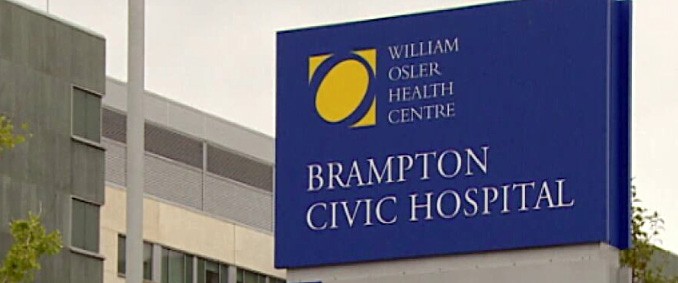More than 80% of all Brampton Civic patients waiting 8 hours in emergency
Published June 17, 2022 at 9:16 am

Wait times for an assessment at Brampton Civic Hospital might be below the provincial average, but over 80 per cent of all patients are spending more than 8 hours in the emergency room before being admitted.
According to data released by Health Quality Ontario, the average time patients wait for their first assessment by a doctor in Ontario is 1.9 hours.
At Brampton Civic, that wait time is only slightly below average at 1.6 hours, and patients who don’t end up being admitted only spend an average 2.9 hours in hospital, again below the province’s average of three hours.
Some 76 per cent of low-urgency patients finished their emergency visit within the province’s target time of 4 hours.
But when looking at the length of stay in emergency for all patients, only 16 per cent fell within the province’s target time of 8 hours, well below the provincial average of 25 per cent.
RELATED: Doug Ford in Brampton to invest $21 million to develop new hospital
William Osler Health System oversees Brampton Civic Hospital, the Peel Memorial Centre in Brampton, and Etobicoke General Hospital.
Out of all three Osler facilities, Brampton Civic had the longest wait times by far with the average at Peel Memorial coming in at 0.6 hours, and 0.7 hours at Etobicoke General.
The call for a new hospital and healthcare improvements in Brampton have been a hot-button issue for years, ramping up during the COVID-19 pandemic and becoming a talking point for politicians during the provincial election campaign earlier this year.
In March, the province committed to helping fund a new $365-million cancer treatment centre in Brampton which will be part of the Brampton Civic campus.
The cancer centre is in addition to the expansion of Peel Memorial, which has also seen a renewed funding commitment from the province in recent months.
The city’s portion of the cancer centre and Peel Memorial projects comes in at $125 million, with Brampton already covering half the bill by transferring $62.5 million from capital reserves.
Council also passed a motion which will see Brampton residents pay a 1 per cent tax levy to help pay for the projects as the city still needs to plug the remaining $62.5 million funding gap by 2027.
The combined cost of both projects is an estimated $1.1 billion, with the city and Osler required to fund a local share of $250 million.
INsauga's Editorial Standards and Policies

